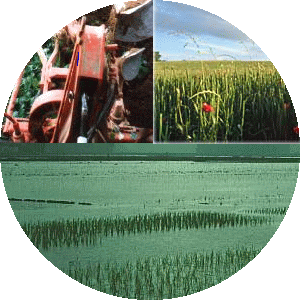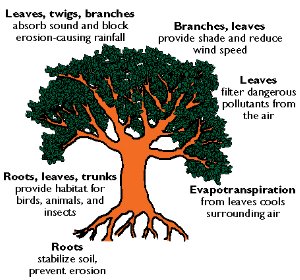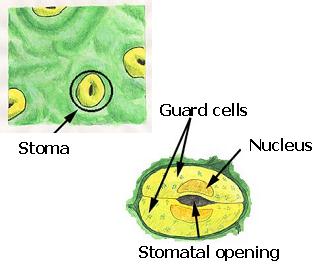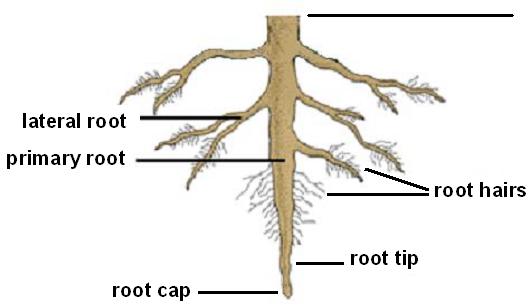 > English > Climate Encyclopaedia > Food and Climate > basics > 1. Plants and climate > - plants and environment
> English > Climate Encyclopaedia > Food and Climate > basics > 1. Plants and climate > - plants and environment
|
|
Plants and the environmentAs plants interact with the environment directly by exchanging water and energy, they are very sensitive to storms, droughts and floods. These weather events can severely damage crop yield. In this unit we look at how plants are affected by changes in temperature, humidity and rainfall.
|
|
As you know, plants need water to live and grow. High temperatures reduce the availability of water and decrease crop yields. Young plants are especially vulnerable to extreme weather conditions. Let´s now look at some of the mechanisms plants use to cope with extreme weather events such as high temperatures, floods or droughts.
|
High temperatures |
High temperatures affect crops directly by increasing the rate at which they loose water (their evaporation rate), in the same way that high temperatures make us sweat. Plants have very small pores, called stomata, spread over their leaves. These stomata help the plants control how much water they contain. In the picture you can see that the stomata are made up of two guard cells which open or close the pore depending on how much water the plant needs. During dry periods, the guard cells are closed so that the plants do not loose too much water. Under normal weather conditions, the stomata are open.
|
|
|
Each plant type has different structural characteristics and so all plants don't grow well at the same temperature. When the optimal temperature value for a particular plant is exceeded, the plant tends not to grow as well leading to a drop in yield. Most plants are very sensitive to high temperatures, although the extent varies depending on the age of the plant and its ability to withstand poor situations. High temperatures also increase the amount of water lost from the soil by evaporation. This also affects plant growth as the soil is their main source of water.
|
|
PrecipitationPrecipitation (rainfall) is the primary source of soil moisture, and rainfall amount is probably the most important factor determining the crop yield. A change in climate can cause an increase or a decrease in the amount of precipitation which falls.
|
|
Roots are one of the main ways plants get water from the environment. In many parts of the world, plants have much longer roots than trunks or branches. Sometimes a bush that is only around 30 cm high can have roots that go as deep as two meters into the soil. This happens in places where there is not much rain during the year, like the deserts or the very arid dry regions of the world. As you can see in this picture, plant roots spread throughout the soil so that water can be taken up in different places at the same time. The main roots have fine root hairs on them to allow water to be absorbed easily.
|
|
Dry periods can badly affect plant growth but the amount of damage depends on the ability of the plant to expand its root system and how much water the soil can hold onto. High humidity, frost and hail may also damage certain crops.
|
High temperatures are normally accompanied by dry periods and both the warmth and the lack of water can have negative effects on plant growth. Roots are unable to find water in the soil and stomata have to close to prevent water loss from the plant. This causes the temperature of the plant to rise and this can damage the plant. When plants struggle to grow because of high temperatures or lack of water, they are said to be under stress. Excessively wet years, on the other hand, may cause crop yields to fall. The soil becomes waterlogged and the plant roots rot in the excess water. Intense bursts of rainfall may also damage young plants, both because of the hard impact of the rain drops on the tender plants and because heavy rain can cause soil erosion.
|
|
1. scientific reviewer: Alex de Sherbinin - CIESIN, Columbia University, USA 2. scientific reviewer: Lily Parshall - Goddard Institute for Space Studies, Columbia University, USA educational reviewer: Emilio Sternfeld - Colegio Virgen de Mirasierra - España last published: 2004-05-12 |




